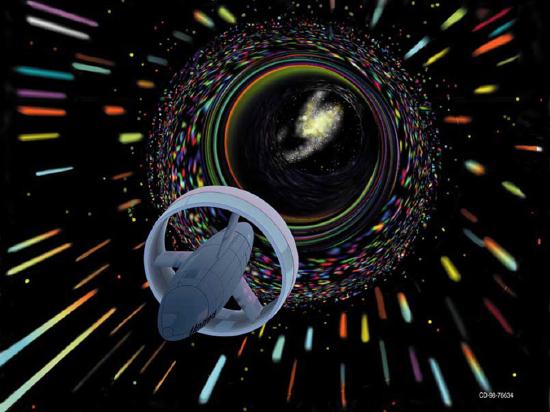2: Limits
( \newcommand{\kernel}{\mathrm{null}\,}\)
The idea of a limit is central to all of calculus. We begin this chapter by examining why limits are so important. Then, we go on to describe how to find the limit of a function at a given point. Not all functions have limits at all points, and we discuss what this means and how we can tell if a function does or does not have a limit at a particular value. This chapter has been created in an informal, intuitive fashion, but this is not always enough if we need to prove a mathematical statement involving limits. The last section of this chapter presents the more precise definition of a limit and shows how to prove whether a function has a limit.
Science fiction writers often imagine spaceships that can travel to far-off planets in distant galaxies. However, back in 1905, Albert Einstein showed that a limit exists to how fast any object can travel. The problem is that the faster an object moves, the more mass it attains (in the form of energy), according to the equation
m=m0√1−v2c2
where m0 is the object’s mass at rest, v is its speed, and c is the speed of light. What is this speed limit? (We explore this problem further in the chapter)

- 2.1: A Preview of Calculus
- As we embark on our study of calculus, we shall see how its development arose from common solutions to practical problems in areas such as engineering physics—like the space travel problem posed in the chapter opener. Two key problems led to the initial formulation of calculus: (1) the tangent problem, or how to determine the slope of a line tangent to a curve at a point; and (2) the area problem, or how to determine the area under a curve.
- 2.2: The Limit of a Function
- A table of values or graph may be used to estimate a limit. If the limit of a function at a point does not exist, it is still possible that the limits from the left and right at that point may exist. If the limits of a function from the left and right exist and are equal, then the limit of the function is that common value. We may use limits to describe infinite behavior of a function at a point.
- 2.3: The Limit Laws
- In this section, we establish laws for calculating limits and learn how to apply these laws. In the Student Project at the end of this section, you have the opportunity to apply these limit laws to derive the formula for the area of a circle by adapting a method devised by the Greek mathematician Archimedes. We begin by restating two useful limit results from the previous section. These two results, together with the limit laws, serve as a foundation for calculating many limits.
- 2.4: Continuity
- For a function to be continuous at a point, it must be defined at that point, its limit must exist at the point, and the value of the function at that point must equal the value of the limit at that point. Discontinuities may be classified as removable, jump, or infinite. A function is continuous over an open interval if it is continuous at every point in the interval. It is continuous over a closed interval if it is continuous at every point in its interior and is continuous at its endpoints.
- 2.5: The Precise Definition of a Limit
- In this section, we convert this intuitive idea of a limit into a formal definition using precise mathematical language. The formal definition of a limit is quite possibly one of the most challenging definitions you will encounter early in your study of calculus; however, it is well worth any effort you make to reconcile it with your intuitive notion of a limit. Understanding this definition is the key that opens the door to a better understanding of calculus.
- 2.6: Chapter 2 Review Exercises
- This page features exercises focused on limits, continuity, and rates of change in calculus. It includes evaluating mathematical truths, using the Squeeze Theorem, and applying the precise definition of limits. The text addresses continuity in piecewise functions and explores function behavior in specific scenarios, as well as a practical application of the Intermediate Value Theorem, serving as a guide to fundamental calculus concepts.
Thumbnail: The limit of a function. (CC BY NC SA; Openstax via Calculus-Volume-1)


